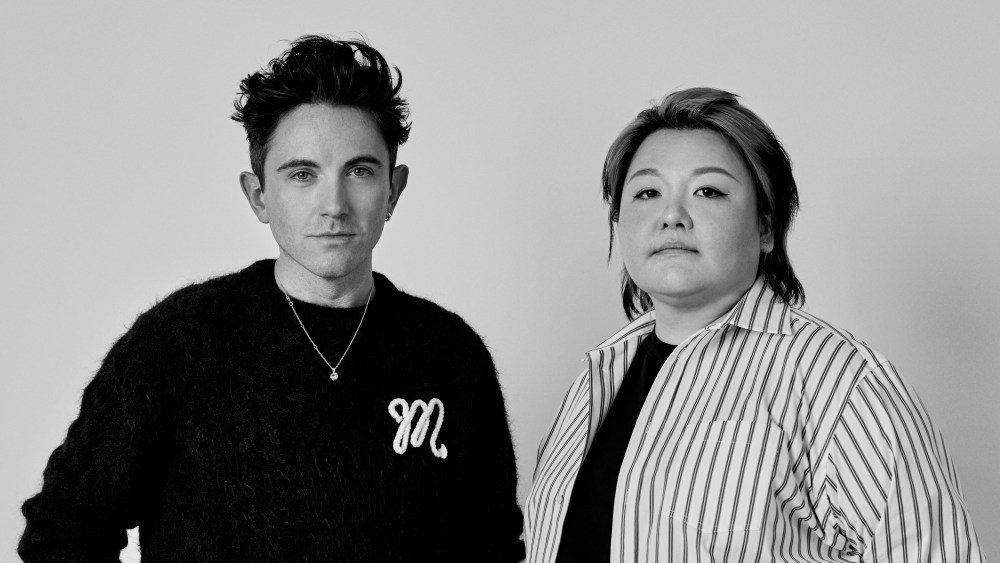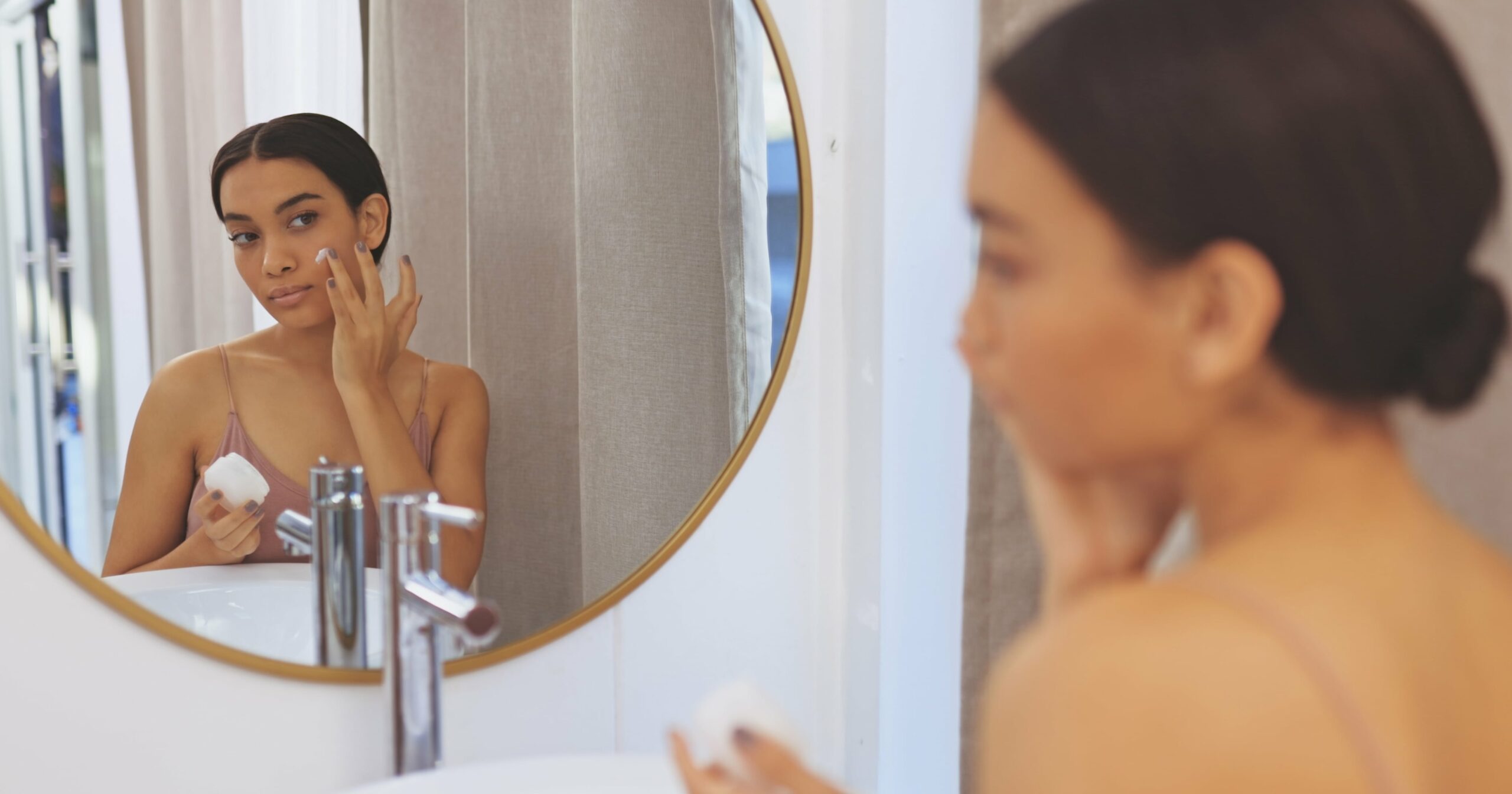TikTok loves a viral fitness trend, and if there’s one that’s here to stay, it’s the ever-popular reformer workout. If you’ve ever had to hold a neverending plank on what appears to be a medieval torture device, you know it’s no joke. But what you may not know is that the intense classes you’ve been going to might not really be Pilates – in fact, they could be closer to an entirely separate type of fitness, known as The Lagree Method.
When it comes to the Pilates vs. Lagree debate, there’s a lot to unpack (and TikTok is already on it). The two workouts may appear similar at a glance, but they’re completely different, each with their own approaches, sets of principles, and fitness aims. You can think of reformer workouts like a venn diagram: Pilates, Lagree, then everything in between, says movement instructor José San Miguel, the studio manager at FlowCorps Durham. Because there’s a gray area these days about what Pilates isn’t and isn’t, it’s important to know exactly what you’re signing up for.
So, what’s the difference between Pilates and Lagree? And if you’re going to use those precious ClassPass credits or pay for a studio membership, how do you know which approach is right for you? Here’s everything you need to know about Pilates and Lagree, according to fitness experts.
Experts Featured in This Article:
José San Miguel (they/them) is the studio manager at FlowCorps Durham.
Portia Boston (she/her) is an NASM-certified personal trainer, certified mat pilates instructor, and Pro Coach at Solidcore.
Sebastien Lagree (he/him) is the inventor, founder, and CEO of Lagree Fitness.
What Is Pilates, Exactly?
Pilates is a low-impact method of training that focuses on alignment, flexibility, and strengthening your core. It was developed in the early 1920s by Joseph Pilates, who originally created it as a way of rehabilitating soldiers during World War I. He and his wife Clara set up the first Pilates studio in New York City around 1926, and it instantly became popular with dancers, opera singers, and more.
Joseph Pilates’ O.G. method featured 34 traditional mat exercises, all designed to help you develop core strength. Apart from mat Pilates, you can also practice on a Pilates reformer-which uses a platform and springs with various levels of tension to create resistance (similar to adding weight). You can also use a Cadillac or barrel, which can help you develop more strength and greater range of motion.
“Pilates focuses on improving posture and increasing flexibility and balance using movements that are slow and controlled,” says Portia Boston, an NASM-certified personal trainer, certified mat Pilates instructor, and Pro Coach at [solidcore]. In addition to developing a strong core, Pilates helps strengthen your back and the muscles around the pelvic floor, Boston says (because your core doesn’t only mean your abs!).
Concentration, breathing, control, precision, and flow are key elements of Pilates, says San Miguel. These core values can help you cultivate a deeper awareness of your body and how it moves-and by doing Pilates over time, you’ll improve flexibility, increase your range of motion, and help reduce your chances of injury, they say.
Of course, the Pilates world is vast and the workout has been adapted in dozens of ways since it was first invented. You’ll find modern adaptations like Pilates sculpt, heated Pilates, and more that are far from what Mr. Pilates created, but they still give you a solid workout. Whether you opt for a mat class, reformer, or another hybrid method, there are many physical benefits of Pilates, from improved posture to pain relief. It may even help your mental health by reducing depression and anxiety symptoms and increasing your energy, per a 2021 study in Complementary Therapies in Medicine.
What Is The Lagree Method?
Lagree Fitness, often referred to as The Lagree Method or simply Lagree, is a patented exercise method designed to strengthen, tighten, and tone your muscles effectively and efficiently, per the Lagree website. The high-intensity, low-impact exercise was created by Sebastien Lagree, who saw a need for a new training approach while working with clients in LA. Many of them were practicing Pilates already, he says, but they were craving more noticeable physical changes, which prompted him to create something new.
“When I was first introduced to Pilates in 1998, I saw that there was no progressive overloading and no protocol for muscle gain or fat loss. It was never about shaking or sweating,” says Sebastien Lagree, the inventor, founder, and CEO of Lagree Fitness. “But the body will not change unless it’s stimulated and prompted to change.” So, when Lagree saw the Pilates reformer in a local studio and got the idea to add a few more platforms and cables, the Megaformer (originally called the Proformer) was born. (Note: There are now multiple types of Megaformers that can only be used in Lagree-licensed studios).
The workout itself is intense on the muscles and easy on the joints, per the website-but it’ll definitely make you shake, sweat, and probably feel sore the next day. The class includes exercises like planks, lunges, push-ups, and other moves that are unique to Lagree, like “Super Lunge” and “Scrambled Eggs”-which you definitely won’t see in Pilates. Plus, The Lagree Method is centered on ten core principles called the “Magic 10” that help force physical changes in your body.
BTW: If you’re nervous to hit up the weight room, going to a Lagree class can be a helpful alternative since it helps you build strength and increase lean muscle growth, per the website. “It’s a much more holistic way of strength training,” says Lagree. “I think it’s honestly the future of weight lifting.”
The Differences Between Pilates and Lagree
As a reminder, there’s Pilates, Lagree, and a bunch of workouts in between (aka the gray area in that venn diagram). A lot of these classes look the same on the outside, but Pilates and Lagree are not the same thing – although both can be amazing for you, depending on your goals. “I look at these two methods as yin and yang. It’s not that one is better than the other, but they can complement each other,” Lagree says.
Here are the key distinctions between the two approaches:
1. The equipment in each class is different.
“The only link between Lagree and Pilates is the machine itself,” says Lagree. However, a classical pilates reformer is completely different from the Megaformer you’ll see in a Lagree class. (Note: many of the reformer-style machines in popular group classes are inspired by the Megaformer, which can only be used in Lagree-licensed studios).
The original pilates reformer was made around the 1920s, and Lagree’s Megaformer (and other equipment) came onto the scene in the early 2000s. A pilates reformer is usually made of wood and is smaller than a Megaformer, and the latter has two sliding platforms instead of one. Both machines support low-impact workouts that can help with stability and core strength, but generally, the Megaformer is designed for higher-intensity workouts that build muscular endurance.
This video does deep dive into the similarities and differences, but the TLDR; the machines differ in their design and function.
2. The class atmosphere might be completely different.
It’s no secret that every fitness class has its own vibe, especially in the Pilates world. Classical Pilates reformer classes, for instance, tend to be smaller (think: private training or small studios with a few reformers), and Lagree classes are much larger, says San Miguel. Traditional reformer Pilates classes don’t normally involve music, and are likely done at a slower, more mindful pace, they add. On the other hand, Lagree and other reformer-inspired classes are taught to the beat of music and might be more high-energy and intense – but of course, there’s a lot of variability.
3. Pilates typically involves more stretching.
Another key difference between Pilates and Lagree is the presence or absence of stretching, which varies depending on the studio and class you attend, Boston says. “Stretching is a big part of traditional Pilates, but it’s not really a part of what happens in most machine-based workouts,” she says. No matter what type of fitness you’re doing, though, make sure to stretch before, after, and even throughout the day, some trainers say. The benefits of stretching far outweigh the risks.
4. Pilates is rooted in rehabilitation, and Lagree was more inspired by bodybuilding.
“Joseph Pilates believed in the healing qualities of movement, and that movement helped you build a stronger immune system,” says Lagree. “He created a whole system to [help people] create a healthy living, and Pilates is a beautiful method. There is no reason to change it.” Alignment, awareness, breathing, and concentration are key in Pilates, and although muscle-building is possible, it isn’t necessarily the main focus.
Both workouts help your core, but there’s a greater emphasis on muscle-building, specifically, in Lagree and other Megaformer-inspired workouts. “There’s way more strength training and heavier amounts of resistance in a machine-based workout like Solidcore or Lagree,” Boston says. This is why you can finish a reformer Pilates class and feel like you worked hard, but aren’t totally depleted-whereas Lagree or Solidcore might feel more like an intense boot camp.
5. Lagree might get your heart rate up higher.
“You’re a lot more likely to get your heart rate up and sweat [in Lagree] than you would in a traditional mat Pilates class or even a traditional reformer Pilates class,” says Boston. “Not to say that you won’t sweat at all, but I think the biggest difference is mainly the intensity and incorporation of functional strength training. That’s really the bread and butter of machine-based workouts.”
So, How Do I Know Which One Is Right For Me?
It ultimately depends on what you want out of your workout, Boston says. “If you’re looking for something intense, or you want to do more functional strength training, I’d look at machine-based and reformer-based workouts like Solidcore,” she says. And if you’re specifically looking for hypertrophy – the fancy word for muscle-building and body recomposition, she says – Lagree or another machine-based workout may be a good option for you.
On the other hand, Pilates can be a great workout for anyone who wants a less intense approach. “If you’re looking for an experience that is a little bit less intense but is still going to give you all of the stretching and ‘lengthening’ you’re looking for while still activating your stabilizing muscles – or if you’re rehabbing an injury – I might look for mat Pilates or traditional reformer-based Pilates,” Boston says.
If you’re torn between different methods, you can also think of it in terms of the class experience. “What is the environment you care to learn in?” says San Miguel. “Do you want something that’s slower-paced and likely not taught to music? Do you care about it being rhythm-based?” Maybe being in a nightclub-like environment motivates you, or you prefer to be in a calmer, quieter setting with fewer students. Pick what’s best for you.
Tips For Your First Pilates or Lagree Class
Attend a beginner-friendly class first.
Before going to any workout class, whether it’s Pilates, Lagree, or something in between, do some research on the studio beforehand and see if you can find a class catered to first-timers, Boston recommends.
Arrive early and touch base with your instructor.
Carve out some extra commute time to introduce yourself to the teacher and let them know you’re new. With that time you can ask questions and alert your instructor to any injuries.
Make sure your instructor is certified (and that they’re helping you practice safely).
“You shouldn’t be a fitness instructor if you don’t have a certification. Every person deserves instruction that’s clear, informed, and they deserve to have their body cared for,” San Miguel says.
If you specifically want to try Lagree, for instance, that is a totally different training than a Pilates instructor has – so you’ll want to ask if they’re Lagree-certified first, Lagree says.
Relax and know that everyone starts somewhere.
TikTok makes it seem like everyone is sweating it out on a reformer these days, and there can be a lot of judgment out there, especially when it comes to these exclusive, sought-after fitness classes. But remember that everyone was a beginner at some point, and it’s OK to feel the shakes. “Movement is for everybody,” San Miguel says. “Everybody is an athlete, and athletes of all levels deserve to feel supported, celebrated and successful in their effort. A studio (or an instructor) that can’t secure that for you is not worth your time, effort, or practice.”
Tianna Soto is a wellness writer and editor based in New York City. She holds an MA in clinical psychology in education from Columbia University.




